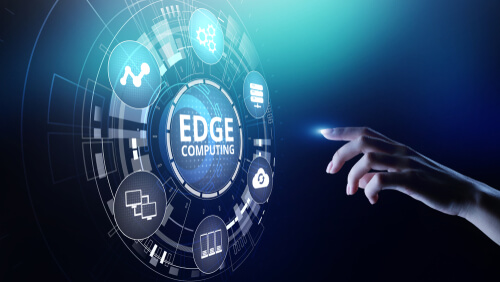IT Trends in Education for 2020


Reviewed and approved by the psychologist Sergio De Dios González
The seven IT trends in education of 2020 will revolutionize the educational process as we know it, and take the whole world to a new technological level.
Many people say that the future is now. In fact, worldwide spending on digital transformation will grow 40% from 2019, which led the UN to classify this year as the year of technological advancement. In this context, it’s crucial for anyone involved in education to know and understand these new IT trends.
This year, 2020, parents and educators are facing changes in information technology and communication that are much more significant than anything we’ve seen before. As a result, it’s necessary to learn about these new tools that, more than just fads or trends, are becoming part of our everyday reality.
2020 – the year of the most highly anticipated IT trends in education
Let’s take a look at the most important trends that are sure to revolutionize classrooms in schools all over the world.

The 5G network
Beyond the international controversy that surrounds this technology, the impact it’s had on the news is entirely justified. That’s because the speed of the 5G network will make it easier than ever for students and institutions to be highly connected.
The 5G network will improve the immediacy of results, as well as distance and adaptive learning with cell phones, and XR (Xtended Reality) learning.
Blockchain
Beyond cryptocurrency and the famous Bitcoin, blockchain technology has powerful applications in many fields, including education.
This year, people started to use blockchain technology for intellectual property protection, administration of goods and services, and food security. All of those are contexts that will be applied, in the same way, to educational centers according to their pedagogical goals.
Cybersecurity and artificial intelligence
Artificial intelligence and cybersecurity are also making a strong appearance in educational systems associated with IT to increase speed, improve the analytical reach of data, maximize 5G technology, and improve students’ digital literacy.
Privacy and digital ethics
One serious problem that parents and educators face is how to set technological boundaries for their children. In the online world, many children and young people don’t understand the importance of protecting their privacy or acting in an ethical way.
Consequently, this year, experts will implement new resources to improve digital literacy. That way, we can teach students the best practices for digital ethics and how to safeguard their privacy.
Hyperautomation
This is a combination of multiple and autonomous learning. It uses software tools to automate digital processes, which set trends for the use of artificial intelligence to analyze, design, and manage, providing an appropriate development for the use of IT.
Edge computing
Edge computing is defined as a location from which technological services are offered. It’s like a kind of hybrid cloud. It’s accessible online to combine public services managed by third parties or public or private entities.
Edge computing allows the use of technologies, virtual reality, and the Internet of Things. The implementation of the 5G network will drive edge computing because it accelerates data transfer.
“Since we live in an age of innovation, a practical education must prepare a man for work that does not yet exist and cannot yet be clearly defined.”
-Peter F. Drucker-

Machine learning
Lastly, machine learning, a scientific discipline that comes from artificial intelligence, also has special relevance this year. It consists of the creation of systems that learn by identifying patterns. They do this with large sets of data in an automatic and automated way.
To do that, it uses algorithms that predict future behavior. Experts call this adaptive learning. Consequently, the educational world will benefit from the speed of web traffic and better connections.
Thus, now you know the seven IT trends in education that everyone will be talking about. It’s important to be aware of them to be able to accept and adapt to what’s to come. In short, there’s a lot of exciting and positive innovations on the horizon.
The seven IT trends in education of 2020 will revolutionize the educational process as we know it, and take the whole world to a new technological level.
Many people say that the future is now. In fact, worldwide spending on digital transformation will grow 40% from 2019, which led the UN to classify this year as the year of technological advancement. In this context, it’s crucial for anyone involved in education to know and understand these new IT trends.
This year, 2020, parents and educators are facing changes in information technology and communication that are much more significant than anything we’ve seen before. As a result, it’s necessary to learn about these new tools that, more than just fads or trends, are becoming part of our everyday reality.
2020 – the year of the most highly anticipated IT trends in education
Let’s take a look at the most important trends that are sure to revolutionize classrooms in schools all over the world.

The 5G network
Beyond the international controversy that surrounds this technology, the impact it’s had on the news is entirely justified. That’s because the speed of the 5G network will make it easier than ever for students and institutions to be highly connected.
The 5G network will improve the immediacy of results, as well as distance and adaptive learning with cell phones, and XR (Xtended Reality) learning.
Blockchain
Beyond cryptocurrency and the famous Bitcoin, blockchain technology has powerful applications in many fields, including education.
This year, people started to use blockchain technology for intellectual property protection, administration of goods and services, and food security. All of those are contexts that will be applied, in the same way, to educational centers according to their pedagogical goals.
Cybersecurity and artificial intelligence
Artificial intelligence and cybersecurity are also making a strong appearance in educational systems associated with IT to increase speed, improve the analytical reach of data, maximize 5G technology, and improve students’ digital literacy.
Privacy and digital ethics
One serious problem that parents and educators face is how to set technological boundaries for their children. In the online world, many children and young people don’t understand the importance of protecting their privacy or acting in an ethical way.
Consequently, this year, experts will implement new resources to improve digital literacy. That way, we can teach students the best practices for digital ethics and how to safeguard their privacy.
Hyperautomation
This is a combination of multiple and autonomous learning. It uses software tools to automate digital processes, which set trends for the use of artificial intelligence to analyze, design, and manage, providing an appropriate development for the use of IT.
Edge computing
Edge computing is defined as a location from which technological services are offered. It’s like a kind of hybrid cloud. It’s accessible online to combine public services managed by third parties or public or private entities.
Edge computing allows the use of technologies, virtual reality, and the Internet of Things. The implementation of the 5G network will drive edge computing because it accelerates data transfer.
“Since we live in an age of innovation, a practical education must prepare a man for work that does not yet exist and cannot yet be clearly defined.”
-Peter F. Drucker-

Machine learning
Lastly, machine learning, a scientific discipline that comes from artificial intelligence, also has special relevance this year. It consists of the creation of systems that learn by identifying patterns. They do this with large sets of data in an automatic and automated way.
To do that, it uses algorithms that predict future behavior. Experts call this adaptive learning. Consequently, the educational world will benefit from the speed of web traffic and better connections.
Thus, now you know the seven IT trends in education that everyone will be talking about. It’s important to be aware of them to be able to accept and adapt to what’s to come. In short, there’s a lot of exciting and positive innovations on the horizon.
All cited sources were thoroughly reviewed by our team to ensure their quality, reliability, currency, and validity. The bibliography of this article was considered reliable and of academic or scientific accuracy.
Harvey López I.V., Cabero J., Díaz R. (2011). La Gestión de la Innovación en la práctica educativa con las TIC: Escuela de Educación. Editorial Académica Española: Venezuela.
This text is provided for informational purposes only and does not replace consultation with a professional. If in doubt, consult your specialist.







